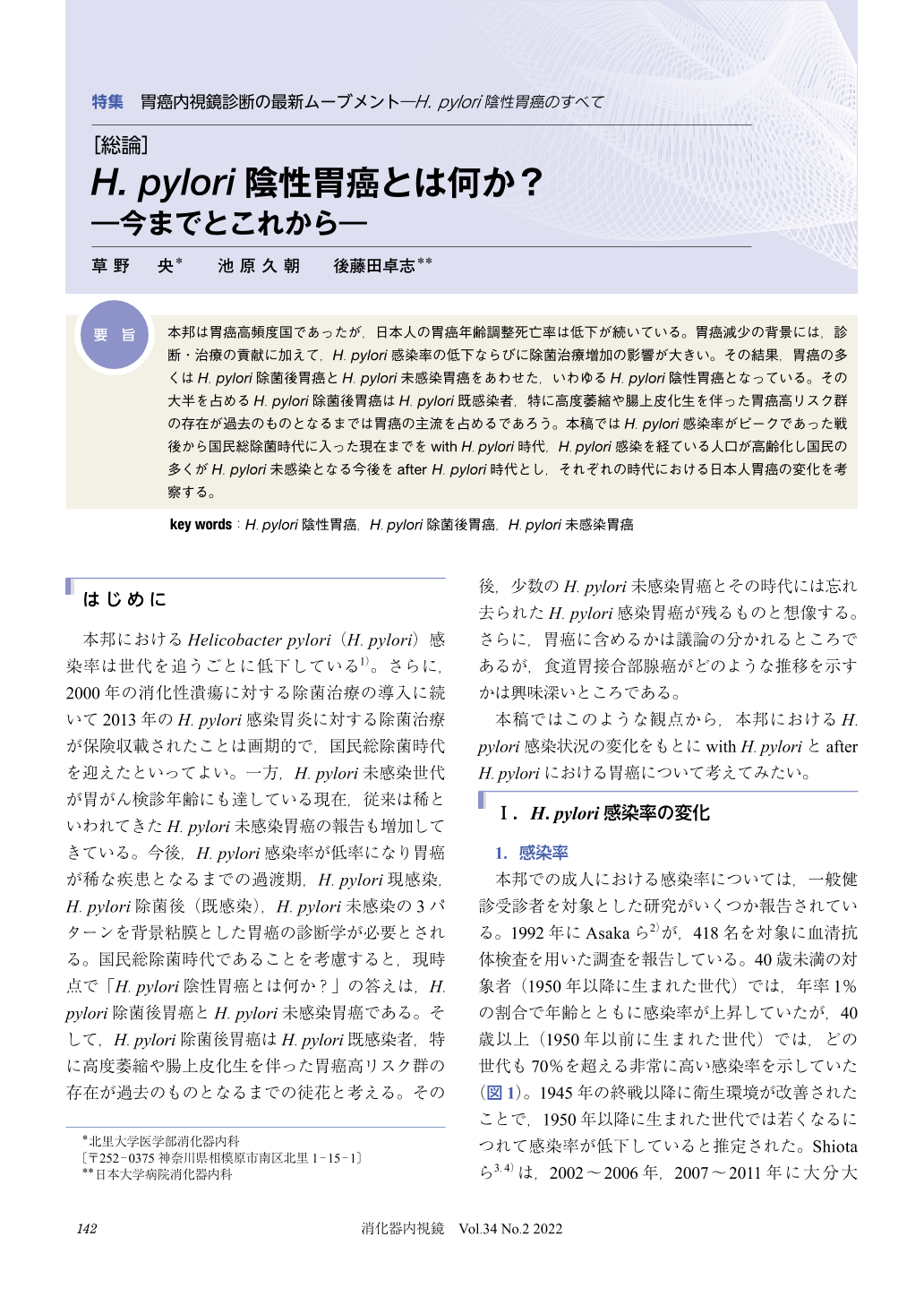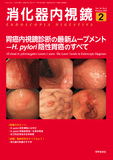Japanese
English
- 有料閲覧
- Abstract 文献概要
- 1ページ目 Look Inside
- 参考文献 Reference
要 旨
本邦は胃癌高頻度国であったが,日本人の胃癌年齢調整死亡率は低下が続いている。胃癌減少の背景には,診断・治療の貢献に加えて,H. pylori感染率の低下ならびに除菌治療増加の影響が大きい。その結果,胃癌の多くはH. pylori除菌後胃癌とH. pylori未感染胃癌をあわせた,いわゆるH. pylori陰性胃癌となっている。その大半を占めるH. pylori除菌後胃癌はH. pylori既感染者,特に高度萎縮や腸上皮化生を伴った胃癌高リスク群の存在が過去のものとなるまでは胃癌の主流を占めるであろう。本稿ではH. pylori感染率がピークであった戦後から国民総除菌時代に入った現在までをwith H. pylori時代,H. pylori感染を経ている人口が高齢化し国民の多くがH. pylori未感染となる今後をafter H. pylori時代とし,それぞれの時代における日本人胃癌の変化を考察する。
Although Japan was a country with a high frequency of gastric cancer, the age-adjusted mortality rate of gastric cancer in Japanese continues to decline. In addition to the contribution of diagnosis and treatment, the decrease in gastric cancer is largely due to the decrease in H. pylori infection rate and the increase in eradication treatment. As a result, most gastric cancers are so-called H. pylori-negative gastric cancers, which are a combination of H. pylori-eradicated gastric cancer and H. pylori-uninfected gastric cancer. Gastric cancer after eradication of H. pylori, which accounts for the majority, will be the main cause of gastric cancer in those who have been infected with H. pylori, especially until the existence of high-risk groups for gastric cancer with severe atrophy and intestinal metaplasia is a thing of the past. This article describes the time from the period when the H. pylori infection rate was at peak to the present era of eradication of the H. pylori. The future period will be the after H. pylori era, and changes in Japanese gastric cancer in each age group will be considered.

© tokyo-igakusha.co.jp. All right reserved.


